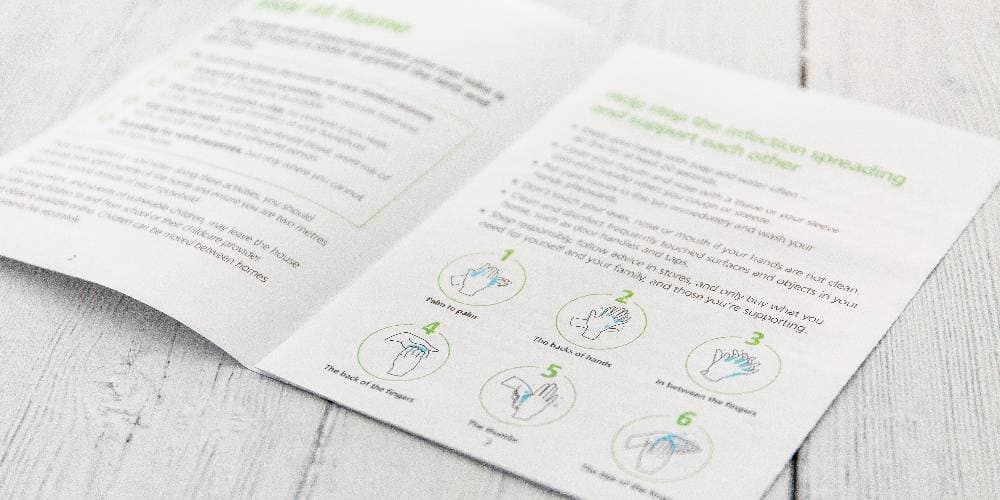Coronavirus Economic Impact - What You Can Do for Your Business
Coronavirus Economic Impact - Learn how to implement the best practices to protect your business and employees, as we understand the consequences of global pandemics.

COVID-19, a highly infectious respiratory disease that has wreaked havoc in nearly every corner of the globe, is said to spread through small droplets, entering the body through the eyes, nose, or mouth.
The economic impact of this pandemic has been felt domestically, as well as internationally, as the public's fear of contamination has increased and policies regarding this outbreak have become stricter.
With many cities, states, and countries imposing strict social distancing or shelter in place orders, there have been countless mass gathering and event cancellations, as well as business and school closures.
While many fear this threat to financial stability across all industries and the global economy, business leaders can still take the recommended steps by following guidelines from the Center for Disease Control and World Health Organization to create an effective response to this coronavirus crisis.

Tips for Employers
Currently, many essential businesses across the U.S. are still allowed to operate as long as they are able to maintain a safe 6 feet distance between persons. While some cafes and restaurants are being required to turn away sit-in customers, they are still able to serve take-out or delivery orders. These distancing measures have been implemented in an attempt to slow the spread of the virus and is expected to continue on for some time.
Business leaders have seen just how difficult these regulations have been for the economy. As foot traffic falls and new alarming information is released by the government every day, it's vital that companies productively plan for this uncertain time and times to come.
As they navigate through how to handle the economic impact of the coronavirus, employers should consider the following recommendations to ensure the safety of customers and staff.
- Require Unwell Employees to Stay Home - Make sure all employees are aware of your most up-to-date sick leave policy and be accommodating, given the current situation. Remain flexible for your employees if they need to stay home and encourage everyone to follow the latest health and safety guidelines. In case of an outbreak, businesses should safely store their staff schedule information to allow for easy contact tracing.
- Encourage Strong Hygiene Standards - Remind employees of the importance of proper hygiene at work by presenting items such as handwashing posters or regularly sending out emails to the entire team regarding updated information from the CDC. Provide sanitizer, tissues, and soap throughout your workplace and ensure that these items are always in stock.
- Increase the Frequency of Cleaning Procedures - Communicate with the cleaning crew and update business cleaning procedures to be more thorough and frequent during the outbreak. Disposable disinfectant wipes are far more effective than reusable cleaning cloths or sponges and ensure hand sanitizers contain at least 60% alcohol as recommended by the CDC.
- Set Up Partitions to Limit Contact - Many businesses have begun installing clear, plastic partitions at check out points and between tables to lower the chances of contamination. These physical barriers can protect staff members as well as consumers so everyone can dine and shop with peace of mind.
- Stay Up to Date with Local and State Regulations - From New York to California, each state and county will have its own regulations and safe practices to abide by. While some areas have loosened their requirements to allow indoor seating in restaurant businesses with mandated mask orders, other cities have banned this altogether to favor outdoor, socially-distanced seating options. For the safety of the public and staff, as well as the reputation of the business, it's important to be compliant with all applicable regulations.
- Refer to the IRS and SBA for Financial Assistance - For small businesses seeking financial relief in these uncertain situations, owners can regularly check the Internal Revenue Service and Small Business Association websites for new loan opportunities. In some local areas, there may also be limited county or city-based grants available for qualifying businesses.

Planning for the Economic Impact
The most important point employers should keep in mind is to remain flexible. Have strategies in place for different scenarios, such as if the business must shut its doors or limit staff members, and make sure there is more than just one plan of action.
Take into account how to prevent transmission among staff members, the best ways to protect the people most at risk (older adults and people with serious underlying medical conditions), and how to maintain business operations while staying in line with new procedures.
Further considerations should include -
- Keep employees in the loop and allow them to review the potential emergency procedures so they are prepared.
- Consider potential outcomes for each plan. How will it impact sales, ordering, staffing, and total revenue?
- Ensure that employees understand the changing policies that apply to them for example, remote working flexibilities, pay, benefits, etc.
- Connect with the local community online via social media or email newsletters to stay connected even if the company must halt operations.

Tips for Creating an Infectious Disease Outbreak Plan
When creating a plan, consider the following steps in relation to the business's current situation.
- Make sure your HR practices are compliant with current public health recommendations and existing laws for health practices by frequenting the CDC website and updating information on a daily basis.
- Consider different policies and flexible work situations where employees can create more distance between one another, making sure that they have the technology and infrastructure in place to support more remote working if possible.
- Prioritize the essential functions of the business needed to keep things running and identify where it may be possible to operate in a more limited capacity. For example, in some restaurant businesses, it may be smarter to prioritize chefs and cashiers as opposed to servers as customers will no longer be able to sit in and dine.
- Consider the supply chain and additional businesses that your company relies on to operate, and communicate with them so that you are aligned with their plans of action.
- Explore how the business can adhere to social distancing orders to limit the chances of community transmission, such as by taping off the recommended 6 feet distance so customers and employees know where they are expected to stand when approaching the register.
- Stay up to date with the changing travel restrictions and how this could impact the business directly, such as the region's economy, customers, and suppliers.

Be Prepared
As of right now, there are many possible outcomes to the longterm economic impact of this coronavirus outbreak. Therefore, business decisions should be based on responding to what is factual rather than fears or rumors.
When there are major shifts within the dynamic of economics, forecasting tools can be incredibly helpful at giving businesses a clearer outlook on how their sales, labor and supply chain may be affected, as well as how best to cope with potential setbacks and profit losses.
Automated software is just one way to harness the power of forecasting to help navigate through these uncertain times.